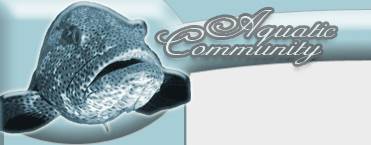Bears
Bears are found on four continents; North America, South America, Asia, and Europe. They are mammals comprising the family Ursidae and their closest living relatives are actually semi-aquatic creatures like walruses and seals.
The bear family
The family Ursidae is today comprised of just eight living species:
- Giant Panda, Ailuropoda melanoleuca
- Spectacled Bear, Tremarctos ornatus
- Brown Bear, Ursus arctos
- American Black Bear, Ursus americanus
- Polar Bear, Ursus maritimus
- Asiatic Black Bear, Ursus thibetanus
- Sloth Bear, Melursus ursinus
- Sun Bear, Helarctos malayanus
Many of these species can be divided into several subspecies and a more complete family tree (containing living species only) would therefore look like this:
- Subfamily Ailuropodinae
- Subfamily Tremarctinae
- Spectacled Bear, Tremarctos ornatus
- Subfamily Ursinae
- Brown Bear, Ursus arctos
- Syrian (Brown) Bear, Ursus arctos syriacus
- Grizzly Bear, Ursus arctos horribilis
- Kodiak Bear, Ursus arctos middendorffi
- Himalayan Brown Bear (Himalayan Red Bear), Ursus arctos isabellinus
- Himalayan Blue Bear, Ursus arctos pruinosus
- Eurasian Brown Bear, Ursus arctos arctos
- Gobi bear, Ursus arctos gobiensis
- American Black Bear, Ursus americanus
- Cinnamon Bear, Ursus americanus cinnamomum
- Kermode Bear, Ursus americanus kermodei
- Polar Bear, Ursus maritimus
- Asiatic Black Bear, Ursus thibetanus
- Formosan Black Bear, Ursus thibetanus formosanus
- Ursus thibetanus gedrosianus
- Ursus thibetanus japonicus
- Ursus thibetanus laniger
- Ursus thibetanus mupinensis
- Ursus thibetanus thibetanus
- Ursus thibetanus ussuricus
- Sloth Bear, Melursus ursinus
- Sri Lankan Sloth Bear, Melursus ursinus inornatus
- Indian Sloth Bear, Melursus ursinus ursinus
- Sun Bear, Helarctos malayanus
- Borneo Sun Bear, Helarctos malayanus euryspilus
The family Ursinae has undergone quite a lot of taxonomic changes in the past and don’t be surprised if you see this family tree slightly altered within a few years. The Giant panda has for instance caused a lot of headache for taxonomists; it was first classified as a bear, then moved to the raccoon family, and then – after having its DNA analysed numerous times –back to the bear family again.
Koalas are often referred to as bears (“koala bears”) in everyday speech but they have never been a part of the bear family. They’re not even mammals; they’re marsupials.
Appearance
The bear species alive today all have bulky and comparatively short-legged bodies covered in shaggy hair. The snout is quite long, the ears rounded, the tail short, and the paws have five claws that cannot be retracted. Unlike other land carnivores, the bear stand and walk on the entire soles of the feet, not on the toes. The bulky bear can look quite unwieldy but don’t let this fool you – many bears are both agile and fast runners. Brown bears are known to reach speeds of 30 mph / 50 km. Bears can also sit up straight as well as stand on the hind feet with notable balance considering they are quadrupeds.
Feeding
In addition to walking on the soles of the feet instead of on toe, the bear differs from most other carnivores by having comparatively undeveloped carnassial teeth. The teeth of a bear are clearly adapted for a diet rich in vegetable matter. The most carnivorous bear is the polar bear, while the least carnivore one is the giant panda, renowned for feeding almost exclusively on bamboo. The other six species falls somewhere in between these two extremes and are all considered omnivores. Even within a specific species you can find significant variation when it comes to the teeth and their configuration. In addition to teeth bears are equipped with claws that they can use for a wide range of tasks, such as climbing trees, digging up roots, and tearing and holding prey. Some bears are better at certain tasks than others, depending on species and life style.
Winter sleep
Bears living in colder climates conserve energy by sleeping through the cold season inside a cave or burrow, a so called bear den. Unlike animals such as the hedgehog the bear does not go through true hibernation. In a hibernating animal the body temperature drops drastically and the heart rate slows down, but the body temperature of a winter sleeping bear only drops a few degrees and the heart rate only slows down somewhat. True hibernators rouse themselves now and then to urinate, defecate and eat from stored food, but the bear normally sleeps through the entire winter without eating, drinking, urinating or defecating. The female bear even give birth in her sleep.
